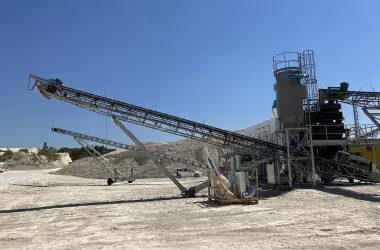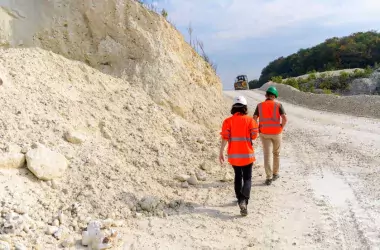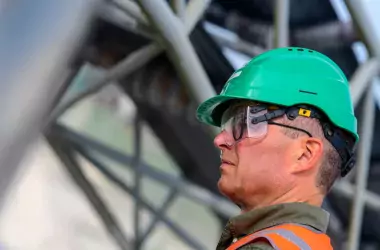With X-ray sorting towards a more sustainable way of mining
Faxe, Denmark
The Lhoist Faxe Kalk Quarry in Denmark has been active since the 12’th century. Historically selective mining for high quality Coral limestone has been the main way of extraction, but already in the late 1970s Faxe Kalk started looking for ways of upgrading other lower quality limestones as available reserves of Coral limestone were getting low.

A new X-Ray based sorting line
The technology for removal of flint impurities, and thereby upgrading low quality high flint containing raw materials to flint free high-quality limestone usable at the Faxe Kalk production plants, now exists and the new X-Ray based sorting line will therefore make it possible to substitute scarce Coral limestone with X-Ray sorted materials.
We expect that, once fully implemented, the X-Ray project will at least double the lifetime of the Quarry - at current product mix and sales volumes.

Reducing drastically the volumes of waste streams
The Quarry operation in the Faxe Quarry was already quite efficient with high utilization rate of the excavated materials. Besides high-quality materials for the Faxe Kalk production plants, a substantial flow of Agricultural limestone is also produced every year.
The quality requirements for Agricultural limestone are lower than for Kiln plant and Filler Grinding plant, so a high percentage of the excavated materials are utilized. But still large volumes of high flint containing materials must be dumped/backfilled either directly during excavation or as waste flows from the production of Agricultural limestone.

An innovative solution
These waste fractions can now be processed at the new X-Ray sorting plant. Beside the flint free limestone leaving the X-Ray sorter, the flintstones which are extracted from the sorting line have a high purity and the Faxe Kalk sales team are currently working on developing a market for this material as a low-cost aggregate.
Other technologies like drum sorting, drop chute sorter, optical, color and NIR sorting have been tested. None of these technologies are useful for the materials and conditions in the Lhoist Faxe Kalk Quarry, so it was only when a horizontal belt sorter equipped with an X-Ray sensor system was tested, the sufficient quality and capacity was reached.

How does it work exactly?
The X-Ray sensor looks at the atomic density of the stones and it is therefore not affected by dust or water. Therefore, it can detect inclusions of flint trapped inside an apparent all limestone particles.
All in all, this will mean that future volumes of wasted/backfilled materials will be reduced drastically, and the overall yield of the Quarry operation will improve even more.